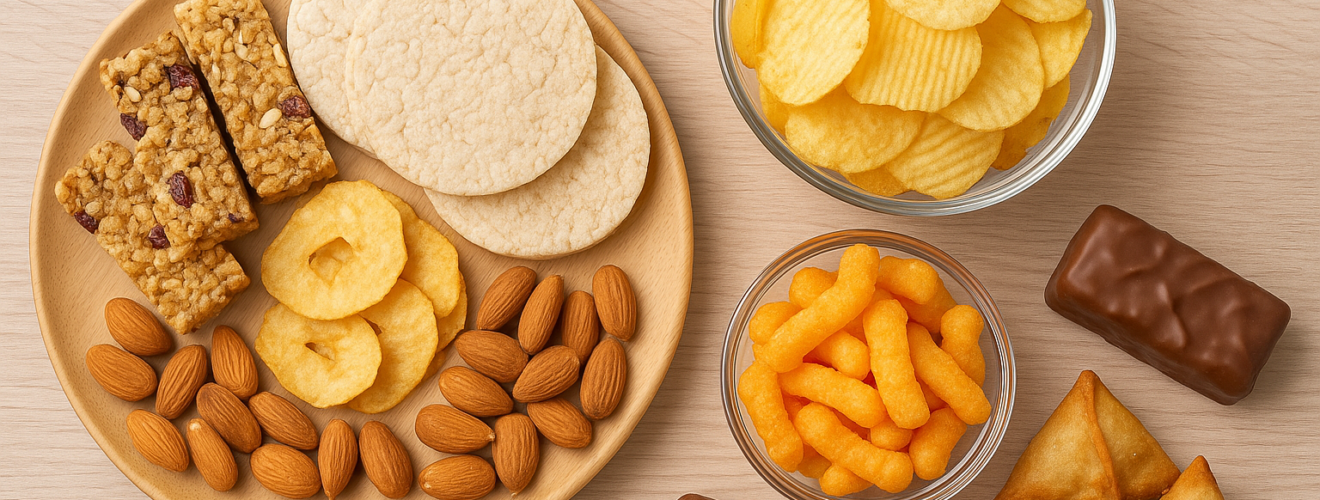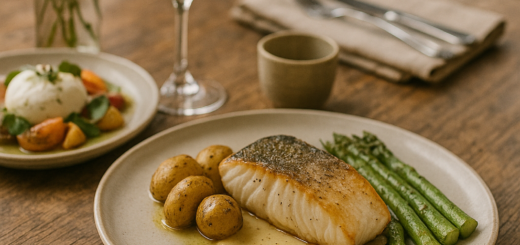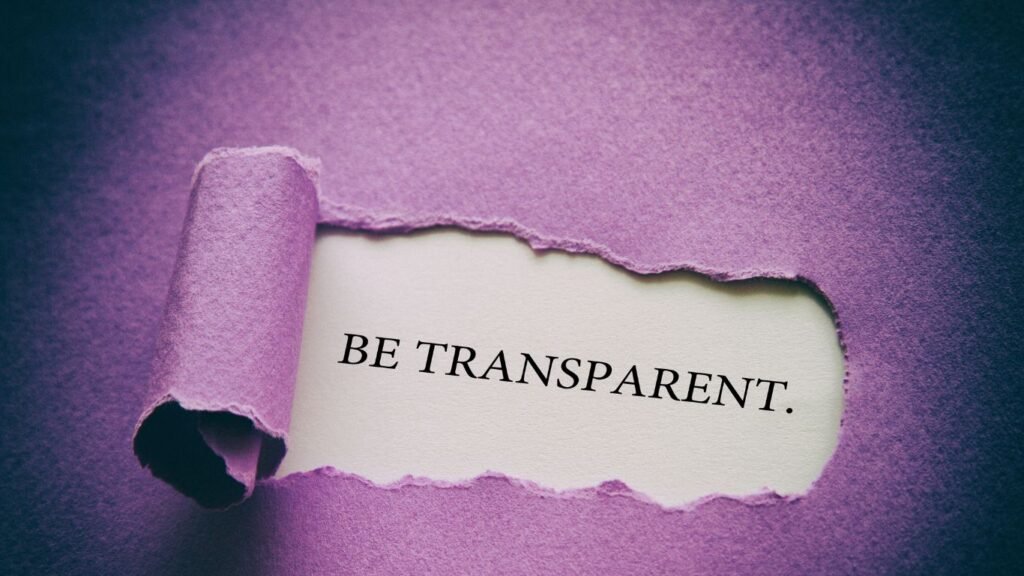Snacks Review: Healthy vs. Junk Snacks

Snacking has become a part of our everyday life. Whether it’s during work breaks, late-night cravings, or those long road trips, snacks keep us fueled and satisfied. Over the last month, we tried both healthy and junk snacks to see how they actually compare in taste, satisfaction, and nutrition. We wanted to move beyond the labels and marketing gimmicks, so we bought different brands, tasted them side by side, and took notes. Here’s our honest review.
The Test Setup
We made two categories: healthy snacks (granola bars, roasted nuts, fruit chips, protein cookies, rice cakes, hummus sticks, energy balls) and junk snacks (potato chips, cheese puffs, instant noodles cups, chocolate bars, fried samosas, candy). We ate them in similar portions and observed three things:
- Taste and Cravings – Do they satisfy the palate?
- Texture and Experience – Do they feel indulgent?
- After-Effects – Do they leave us energized or sluggish?
Round One: Taste Test
The junk snacks came in loud, flashy packaging and smelled inviting the moment we tore the bag open. The potato chips tasted salty and addictive, the cheese puffs melted in the mouth with a cheesy punch, and the chocolate bars gave us an instant rush of sweetness. The flavors popped, and within minutes we reached for more.
The healthy snacks felt calmer on the taste buds. The roasted almonds had a deep crunch, granola bars offered earthy sweetness, and dried fruit chips gave bursts of natural flavor. The protein cookies tasted decent, though some had a chalky texture. The energy balls had a nutty chew, and the rice cakes carried a light crisp. These snacks didn’t trigger the same urge to binge, but they still delivered satisfying bites.
Winner of Taste: Junk snacks grabbed attention instantly, but healthy snacks gave us subtle, long-lasting satisfaction.
Round Two: Texture and Experience
Texture made a huge difference. Junk snacks had a uniform appeal—chips stayed crispy, chocolates melted smoothly, and candies cracked with a satisfying snap. Every bite felt engineered for indulgence.
Healthy snacks felt more natural. Some almonds had uneven roasting, the granola bar sometimes crumbled, and fruit chips lacked consistency in crunch. But that unevenness actually reminded us of real food. The hummus sticks felt creamy and wholesome, and the protein cookies filled us up better than chocolate bars.
Winner of Texture: Junk snacks scored higher for consistency, but healthy snacks gave us a sense of eating something real.
Round Three: After-Effects
This part shocked us. After a plate of chips and chocolates, we felt heavy, sluggish, and thirsty. The salt made us reach for water again and again, and the sugar gave us a quick rush followed by a crash. Productivity dipped, and we wanted to nap.
With the healthy snacks, we felt lighter. Almonds gave steady energy, fruit chips didn’t spike blood sugar, and the protein cookie kept us full longer than a candy bar. Instead of a crash, we felt balanced and alert. The only downside was that some healthy snacks tasted too bland, which made us crave extra seasoning.
Winner of After-Effects: Healthy snacks, without question. They fueled us better and avoided sugar crashes.
The Cost Factor
We also noticed the price gap. A family pack of potato chips cost less than half the price of one small pack of roasted nuts. A candy bar cost almost nothing compared to a protein cookie. Junk snacks dominated the affordability test.
Healthy snacks, on the other hand, felt like an investment. The prices stung at first, but when we realized one pack of nuts kept us full for longer than three packs of chips, the math looked a little better. Still, the upfront cost remains a barrier for many people.
Emotional Pull
Junk snacks felt nostalgic. The taste of chips reminded us of school tiffins, and the crunch of chocolate wafers took us back to childhood. The emotional connection with junk food runs deep, which makes it so hard to resist.
Healthy snacks don’t carry that same cultural bond yet. But after a few weeks of eating them, we started craving almonds instead of cheese puffs and reaching for fruit chips instead of candy. The shift didn’t happen overnight, but it showed us that habits can change with time.
Verdict
After trying both categories, here’s how we rate them:
- Taste: Junk snacks win for instant pleasure, but healthy snacks stay satisfying longer.
- Texture: Junk snacks deliver consistent crunch, but healthy snacks feel more natural.
- After-Effects: Healthy snacks leave us energized, while junk snacks drag us down.
- Cost: Junk snacks stay cheaper, but healthy snacks give better value in the long run.
- Emotional Pull: Junk snacks hold the crown for nostalgia, but healthy snacks build new habits.
Final Thoughts
If we only chased flavor, junk snacks would win hands down. They are engineered to hook us, and they do it brilliantly. But when we look at energy, focus, and overall health, healthy snacks clearly stand out. We didn’t feel guilty after eating a pack of almonds or an energy ball. Instead, we felt good, fueled, and ready to move.
Snacking doesn’t need to be black and white. We learned to keep a balance. Chips or chocolates once in a while felt fun, but switching to healthy options most of the week made us feel stronger and more focused.
So the next time you shop for snacks, ask yourself: do you want instant thrill or steady fuel? Both have their place, but our review proves one thing—healthy snacks win when you play the long game.













